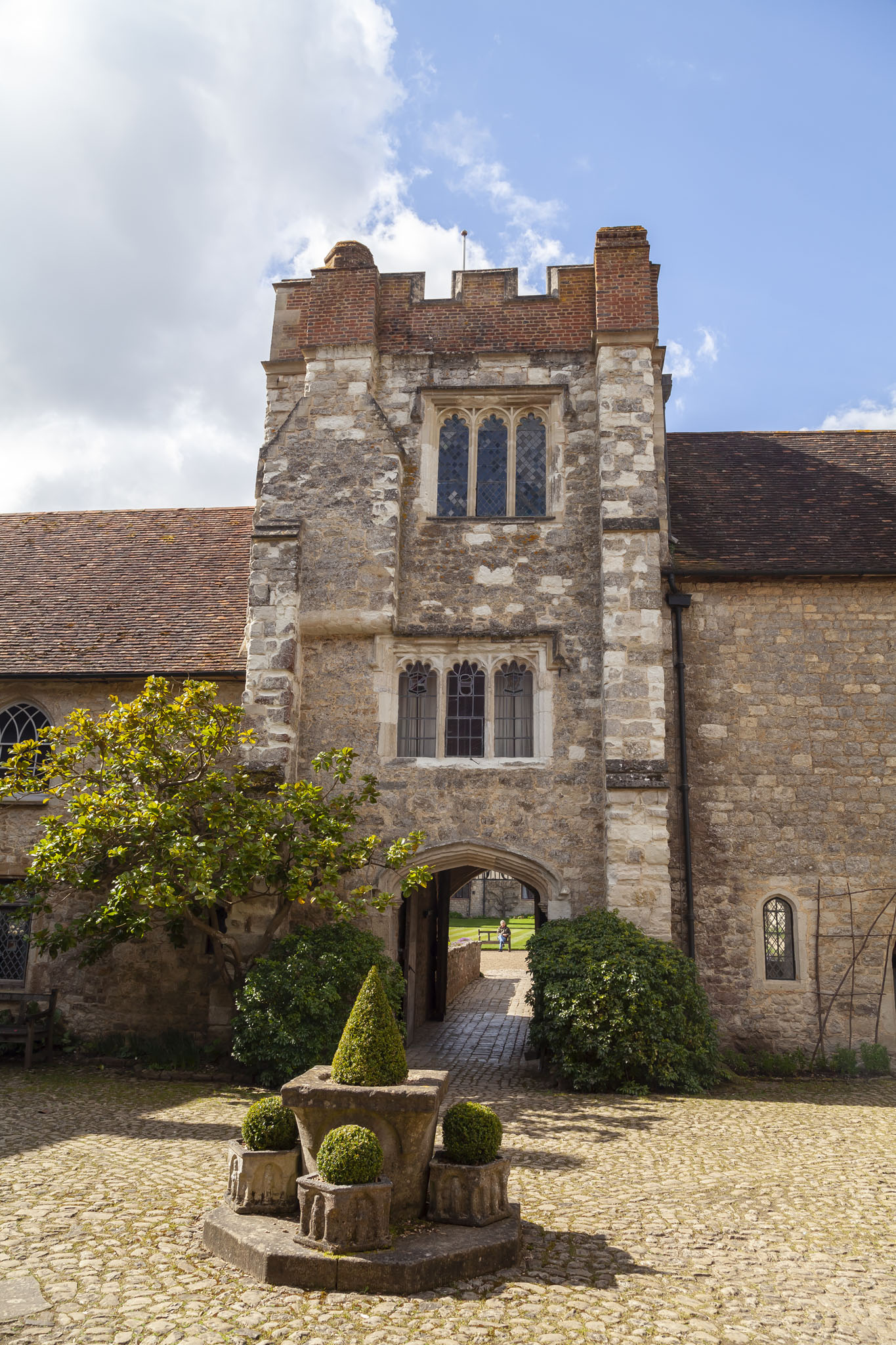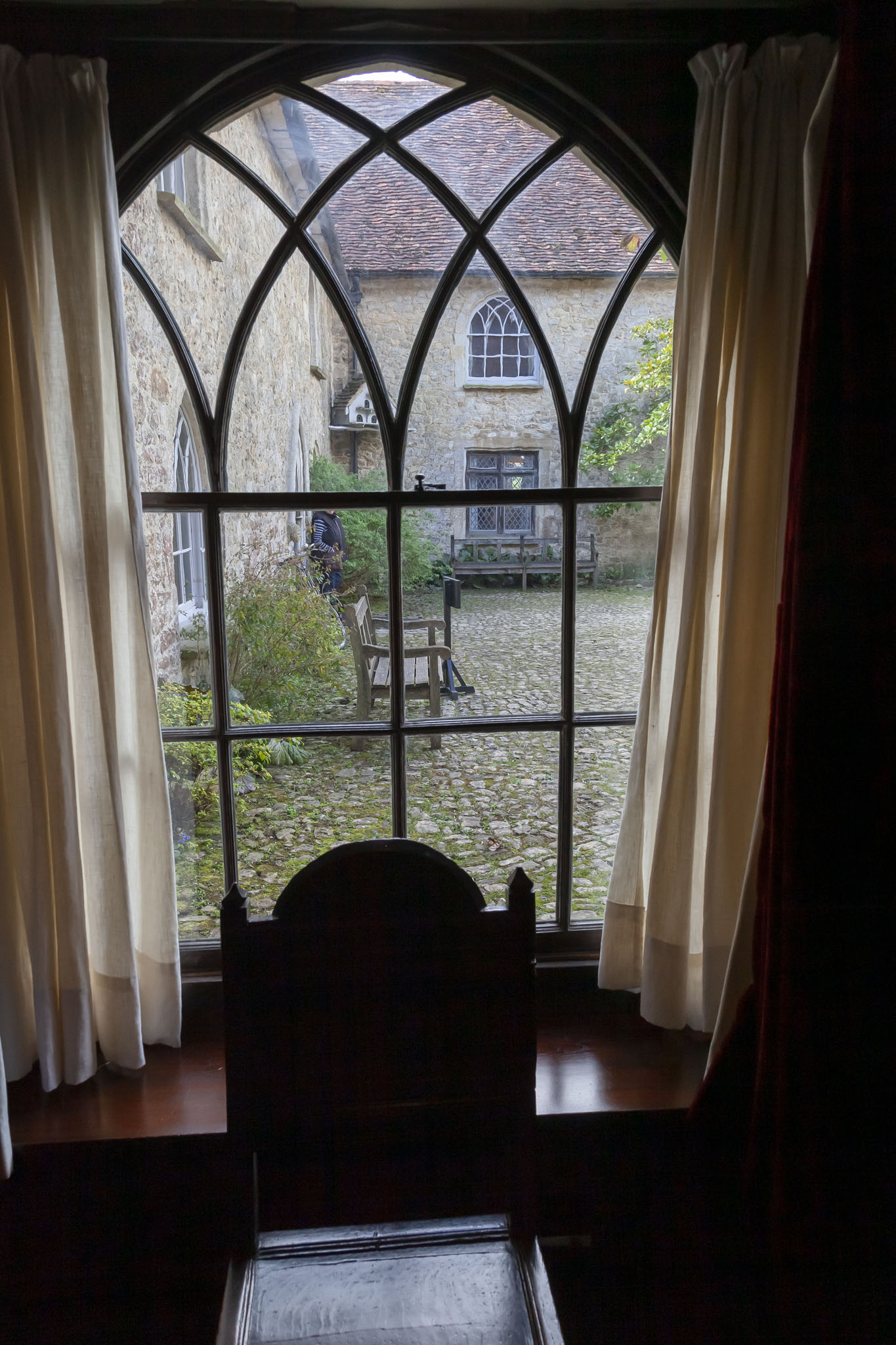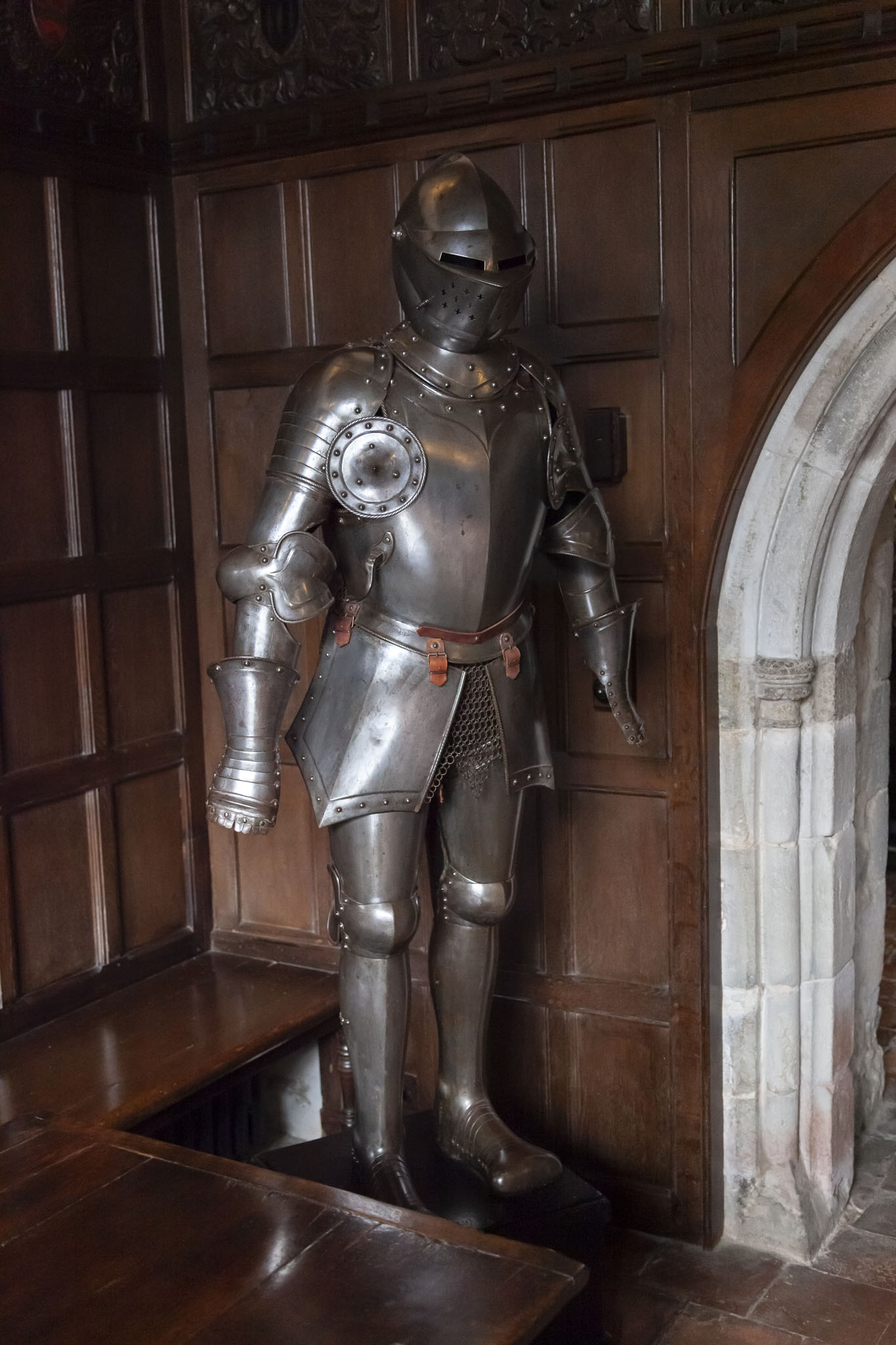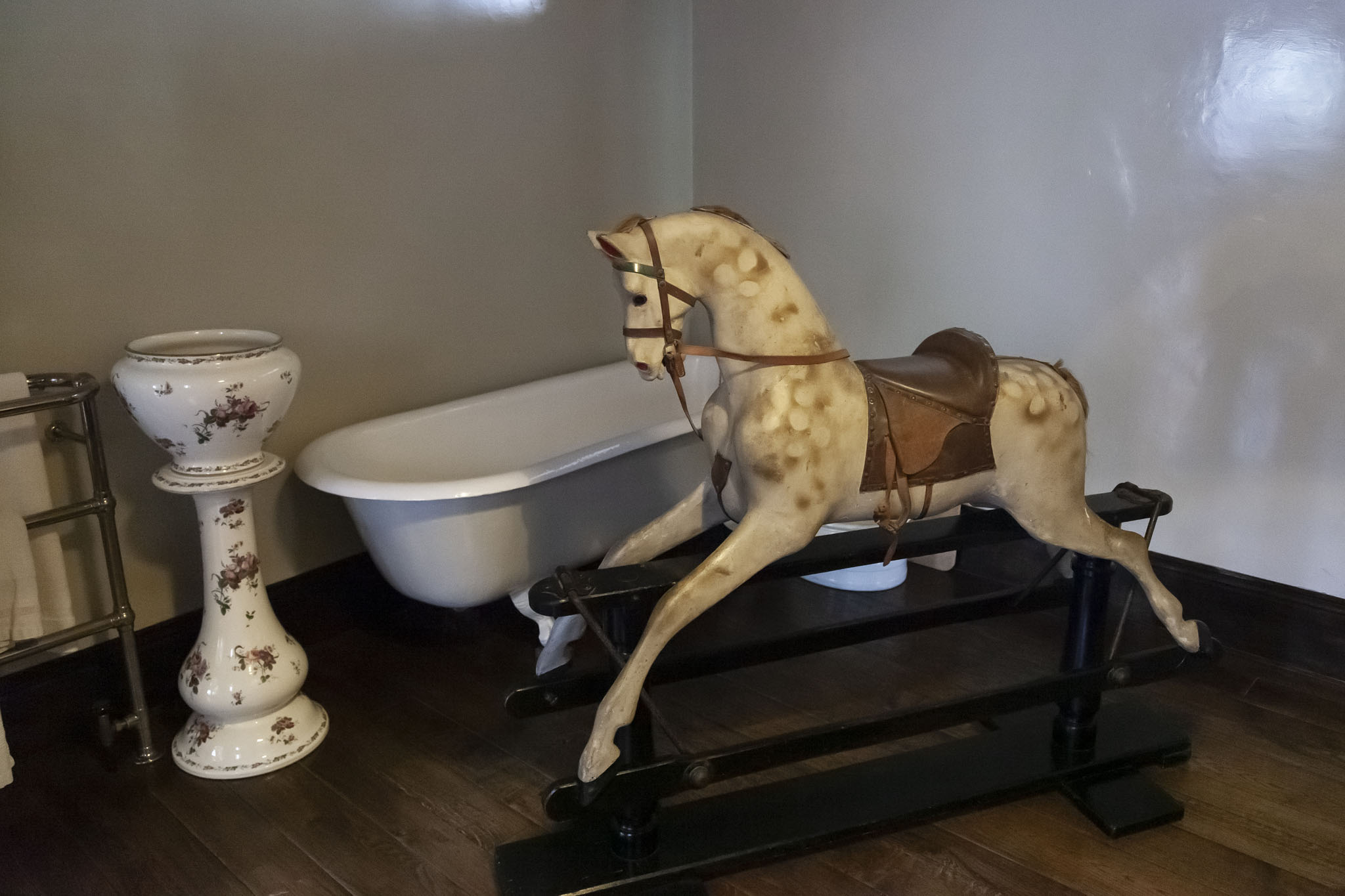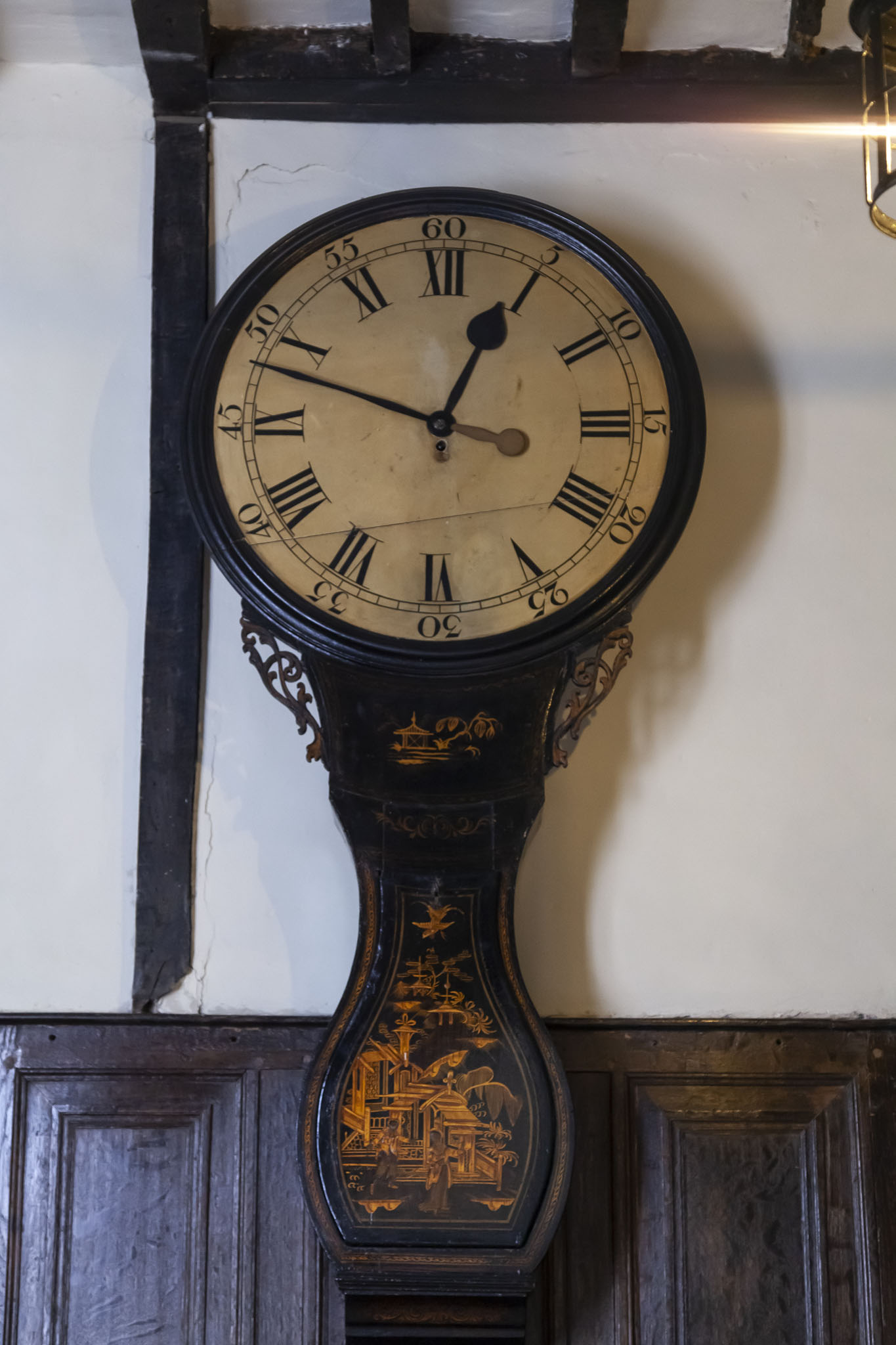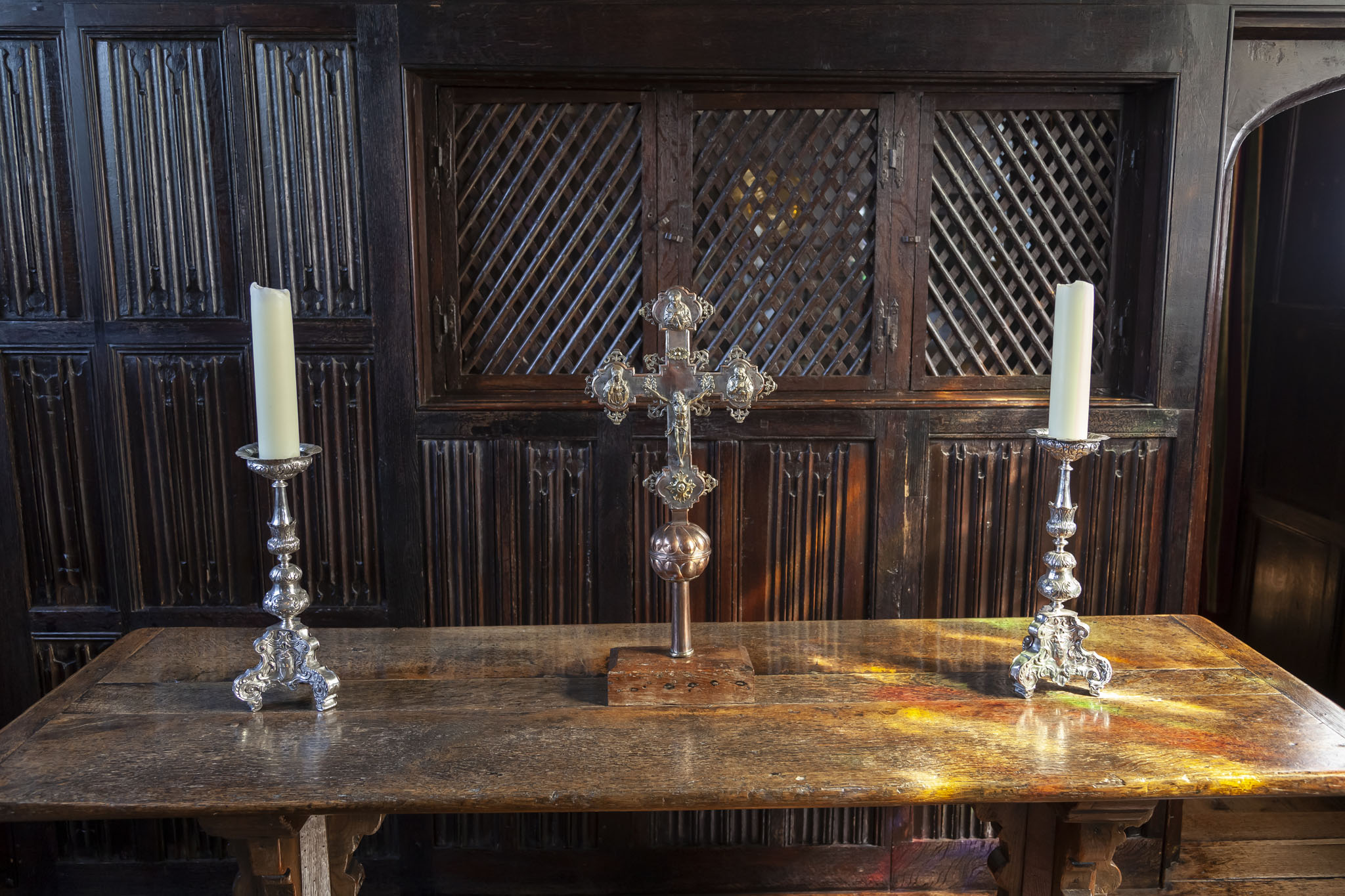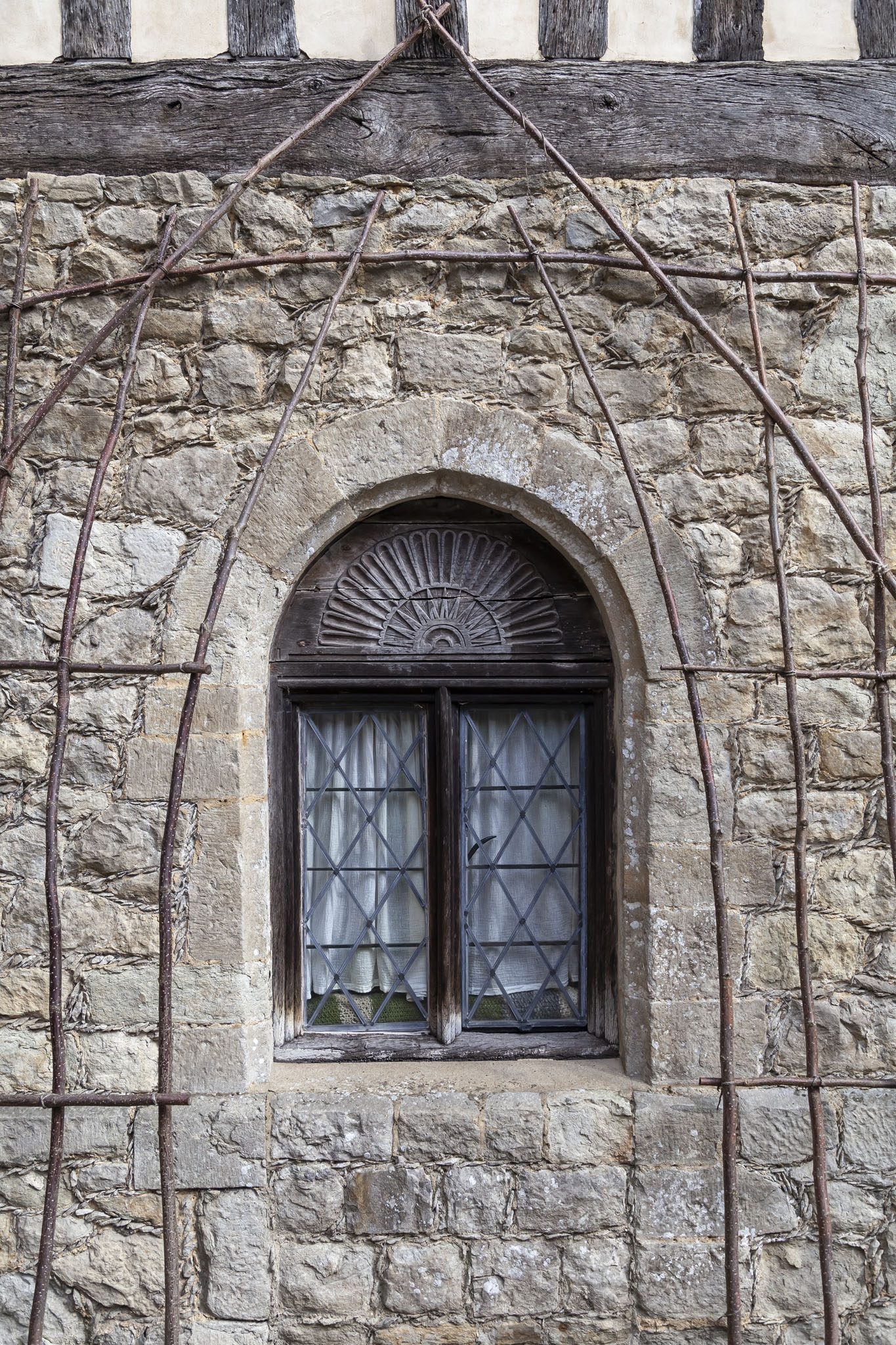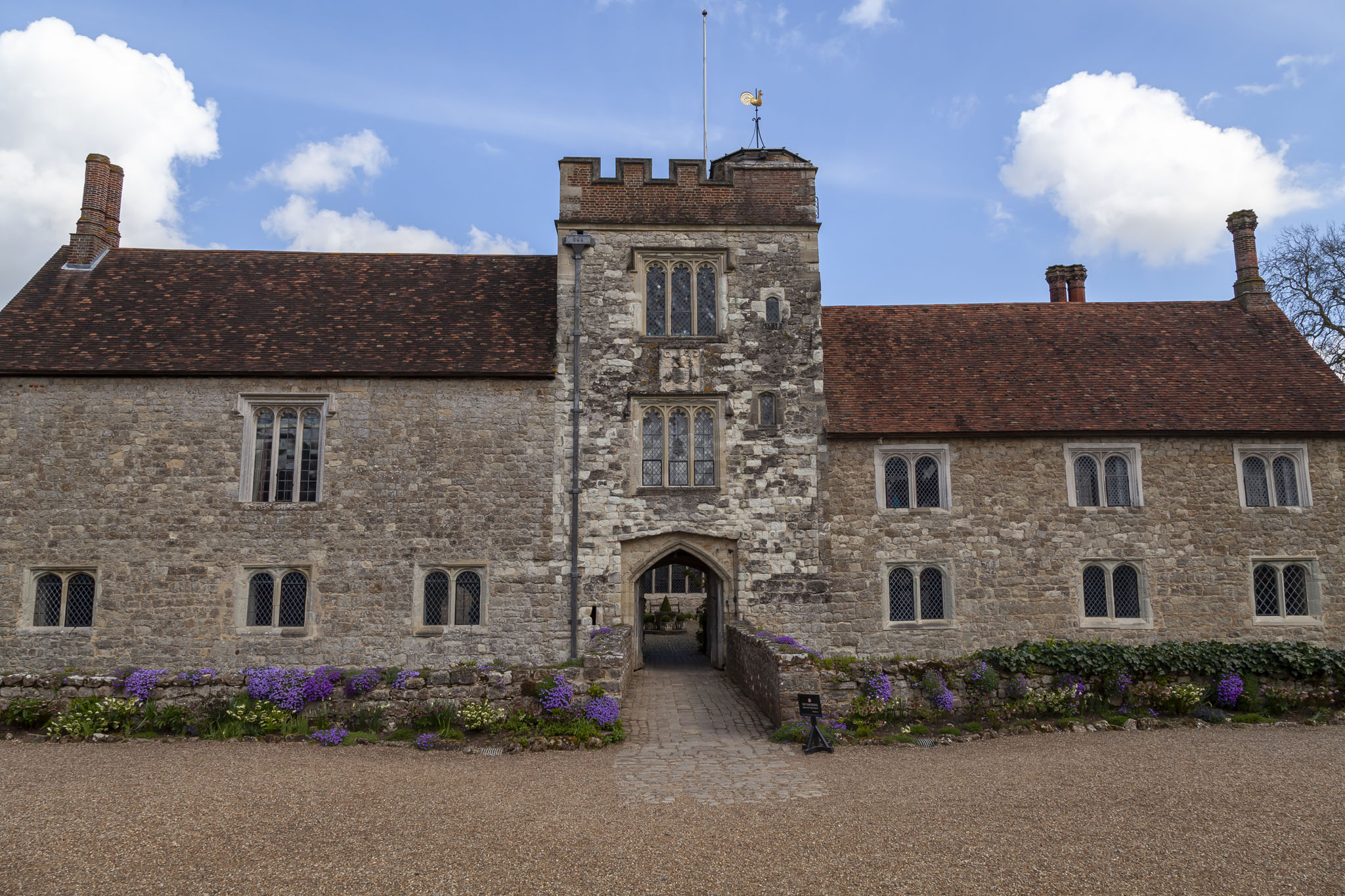At the end of our short break in Kent in 2014 we decided not to take the same route back home – that had been along the south coast – because it had turned out to be far longer than expected, instead opting to come via the quickest way, which for us was via a chunk of the M25 and down the A3. We’d already taken a short detour to stretch our legs on the seafront at Herne Bay on the drive home and added to that another break before the motorway with a look around the National Trust property of Ightham Mote, taking advantage of our membership with the organisation for free access.
Ightham Mote is a moated manor house with origins dating back to the middle of the fourteenth century. What makes it interesting from an architectural perspective is that it remains mostly unchanged from its original design and so more accurately reflects buildings of medieval age, many of which had additions or removals to alter aspects as they passed through successive owners down the centuries. Ightham Mote is a courtyard manor house with most of its features looking inwards to the interior space and very little viewing out or indicating functionality from outside. Surrounding the square building is a square moat over which three bridges cross. The majority of the house’s seventy-or-so rooms are on its eastern side. A garden and lawn area lie to the building’s west.
After a quick look around outside the walls of Ightham Mote we ventured over the bridge into the quadrangle. This was a lovely area; a sun trap still offering opportunities for shade, well-kept bushes and trees to bring a little bit of nature inside, protected from the wind, and shielded from the distractions – and probably dangers, given its age – of the outside world. It would have been a lovely place in which to live.
There was an opportunity to climb the steps to the tower over the arched entrance in one of the house’s walls and we’re not ones to pass up the opportunity to take a chance on a heart attack ending our travelling days. Our tour of Ightham Mote commenced with us heading up for some spectacular views over the grounds and some of the nearby Kent countryside from the battlements.
We then took a wander through the open rooms on the two floors of the property.
Houses like Ightham Mote tend to be inherited within generations of a family and that’s the case with this one too. After a number of owners in its first century and a half it was bought by Sir William Selby (see: Selby Family) in 1591 and there it remained until the late nineteenth century. From then it became a bit of a haunt for Americans.
In the 1880s it was rented out to the family of William Jackson Palmer, a distinguished and thoroughly interesting veteran of the American Civil War, and prominent civil engineer. His daughter was painted in the manor house by the artist John Singer Sargent and the writer Henry James was a visitor. In 1951, following years of neglect in the wake of mounting costs for its upkeep, the decision was made to sell the property and its contents at auction with a view to demolishing the building or transforming it into apartments. Three local men purchased Ightham Mote in order to secure its future and eventually sold it to an American who had been stationed near it during the Second World War. It was he who was able to effect repairs to the historic building and who began to decorate and furnish it with pieces from the seventeenth century and beyond, and in 1965 he announced that on his death it would all pass into the stewardship of the National Trust which it duly did in 1985.
After being completely charmed with the interior of Ightham Mote we left to continue our voyage home but not before making one complete circuit around the house’s moat to enjoy its medieval architecture and idyllic setting one more time.







